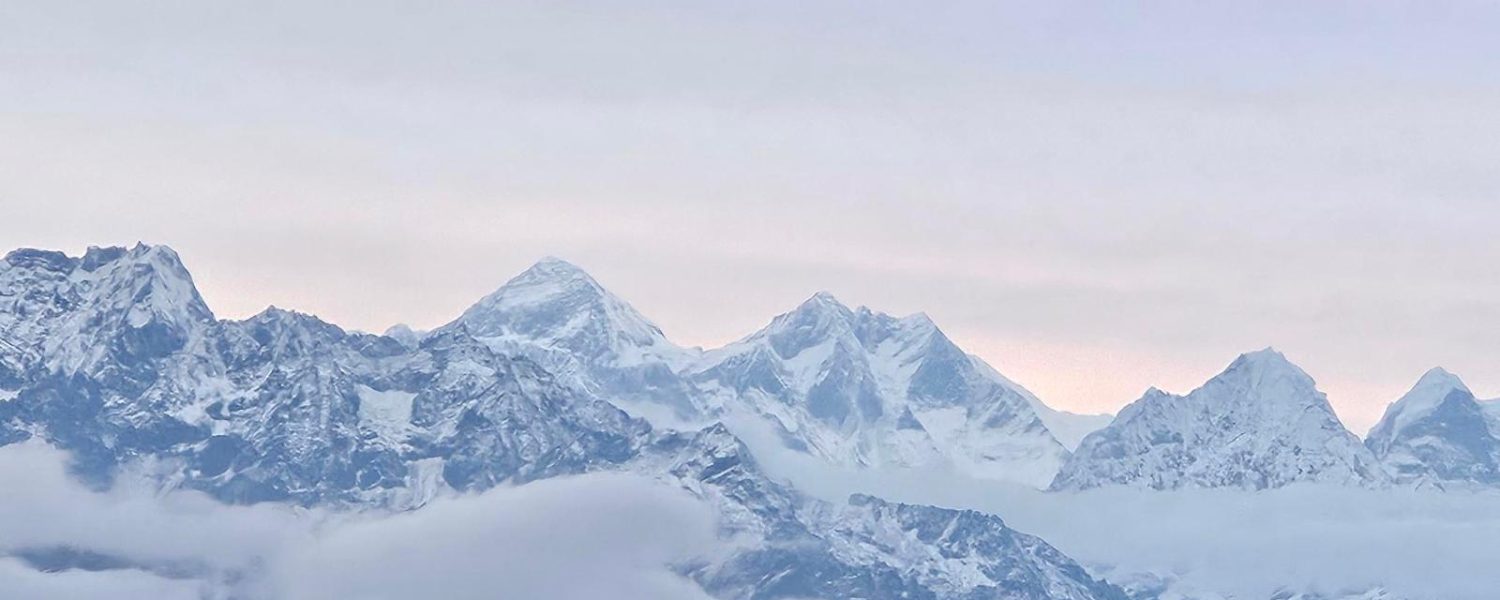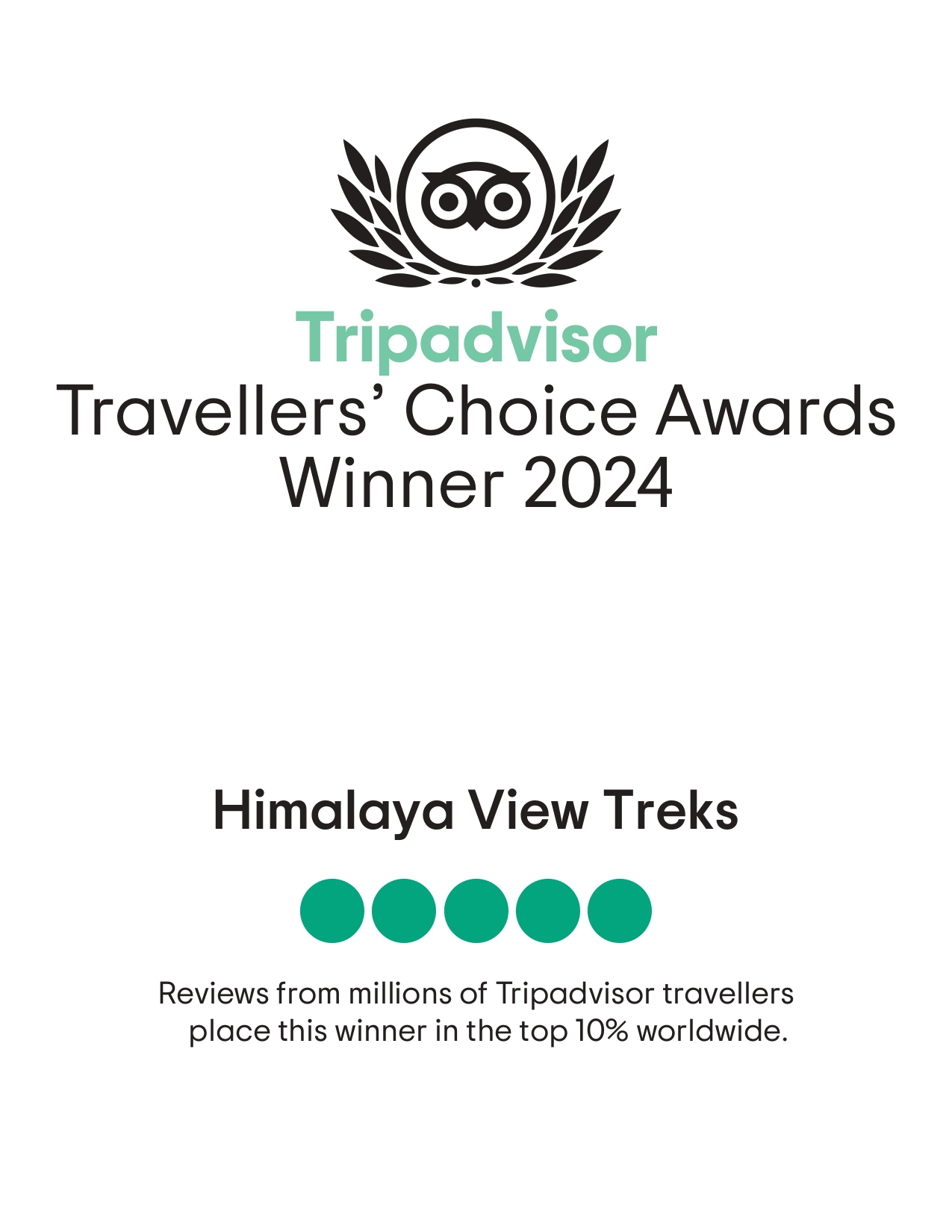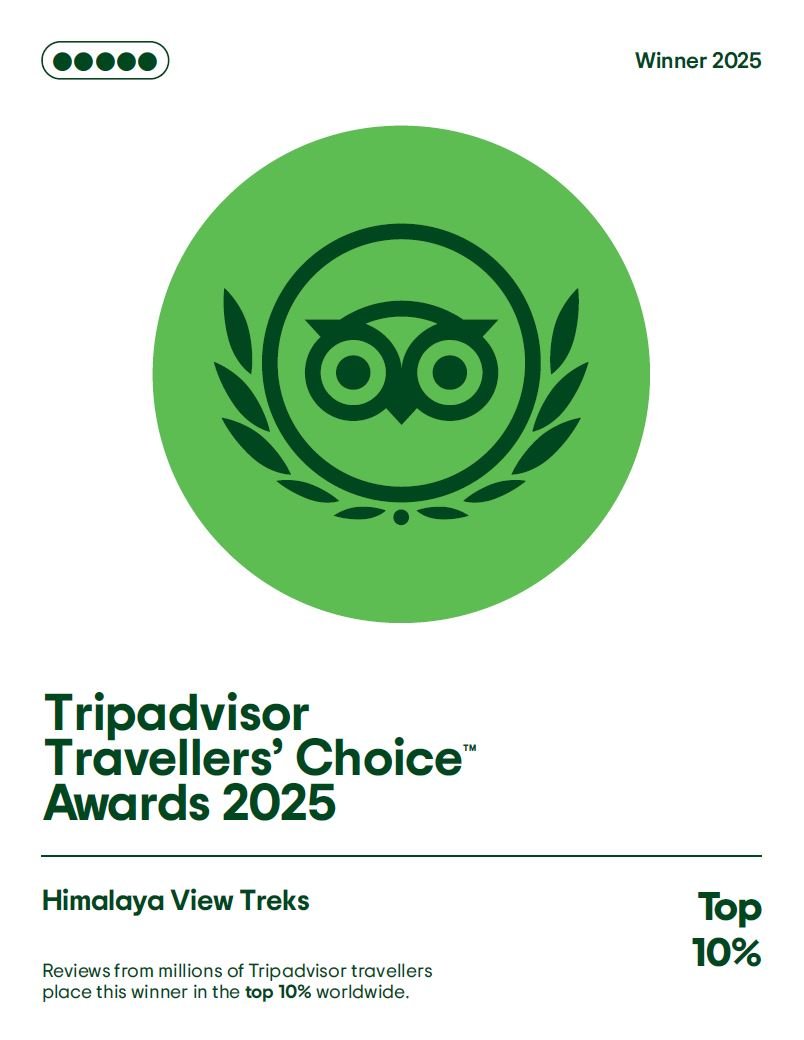A Little-Known Treasure in the Lower Solu Khumbu Area:
Pikey Peak Trek Difficulty and Latest Update
Pikey Peak Trek Difficulty Level & Preparation. The Pikey Peak Trek in the lower Solu Khumbu region is a fantastic option if you’re searching for an alternative trekking experience in Nepal that blends stunning mountain views, fascinating cultural encounters, and an adventure that’s not often taken. Travelers who wish to experience the breathtaking Himalayan landscape without the high-altitude difficulties of the Everest Base Camp trip are increasingly choosing this relatively unknown trek. The Pikey Peak Trek is the ideal combination of adventure and cultural experience because of its moderate difficulty level, varied scenery, and chance to fully immerse oneself in the distinctive customs of the Sherpa people.
Introduction to Pikey Peak Trek
Overview of the Pikey Peak Trek
An option to the more congested paths in the Khumbu region is the relatively new Pikey Peak Trek in the lower Everest zone. This trek offers an unmatched chance to experience pristine landscapes, lush forests, terraced fields, and charming villages while taking in some of the most breathtaking sunrise and sunset views over the Himalayas. It is named after the sacred Pikey Peak (4,065 meters), which has religious significance for the local Sherpa community.
The expansive vista from Pikey Peak itself is one of the trek’s main features. Pikey Peak offers a panoramic perspective of the towering Himalayan giants, including Mount Everest (8,848.86m), Kanchenjunga (8,586m), Makalu (8,481m), Lhotse (8,516m), and many more. Renowned mountaineer Sir Edmund Hillary claims that this view is among the best in Nepal.
The Pikey Peak Trek: Why Choose It?
- Less crowded.
The Pikey Peak Trek is still relatively unknown, in contrast to the Everest Base Camp and Annapurna Circuit treks, which draw thousands of hikers annually. This implies that, away from the bustle of more commercialized trekking routes, you can have a tranquil and engaging trekking experience. - Magnificent Himalayan Sceneries
Pikey Peak offers an absolutely stunning view. Trekkers can enjoy an unbroken view of the tallest mountains in the world, such as Makalu, Lhotse, Everest, and even the far-off Kanchenjunga. With the snow-capped peaks illuminated by golden hues, the sunrise and sunset views from the summit are especially captivating. - The rich traditions and culture of the Sherpa
The Sherpa people, known for their warmth, rich culture, and skill in mountaineering, live in the Solu Khumbu region. A rich cultural experience is provided by the walk, which goes past traditional Sherpa communities, historic monasteries, and chortens (Buddhist shrines). Trekkers can visit monasteries like Thupten Chholing that date back hundreds of years, engage with the people, and even take part in Buddhist ceremonies. - Moderate Accessibility and Difficulty
Trekkers of various skill levels, even beginners with a moderate level of fitness, can successfully complete the Pikey Peak Trek. At 4,065 meters, Pikey Peak, the trek’s highest point, is a lower elevation option than Everest Base Camp, which is 5,364 meters high. In addition to providing breathtaking mountain views, this lessens the risk of altitude sickness. - Diverse Environments and Animals
The walk passes through a range of environments, including terraced farmlands, alpine meadows and dense rhododendron forests. The trail is aesthetically spectacular in the spring when rhododendrons are in blossom. The area is also home to a variety of species, such as red pandas, musk deer, and Himalayan monals, which are Nepal’s national bird.
Latest Updates on the Pikey Peak Trek
The Pikey Peak Trek has seen several enhancements in recent years, aimed at improving the trekking experience while promoting sustainable tourism. Here’s a detailed overview of these development
Better facilities and trails:
Better signage has been added to the hiking paths by local government and tourism organisations, making it easier for both solitary and group hikers to navigate. These upgrades improve overall trekking experience and safety. The trails have also been kept up to guarantee that they can be used frequently.
New Teahouses and Lodging
Along the Pikey Peak path, a number of new teahouses have developed, providing cosy accommodations and genuine regional fare. By offering trekkers comfortable places to stay and chances to interact with the local Sherpa people, these establishments enhance the cultural experience. The trek’s charm is greatly enhanced by the friendly locals and distinctive ambiance, despite the limited conveniences.
Sustainable Tourism Efforts
The local community has initiated programs to promote eco-friendly trekking practices. Trekkers are encouraged to minimize their environmental impact by following guidelines such as carrying reusable water bottles, properly disposing of waste, and respecting local customs and wildlife. These efforts aim to preserve the natural beauty of the region for future generations while supporting the livelihoods of local residents.
Flight & Road Access
Access to the Pikey Peak trek has improved, offering trekkers flexible options:
- Flights to Phaplu: Phaplu serves as a common endpoint for the trek. Flights from Kathmandu to Phaplu are available, providing a quick return option after completing the trek. However, these flights are subject to weather conditions and may experience delays or cancellations.
- Road Infrastructure to Dhap Bazaar: Dhap Bazaar is a popular starting point for the Pikey Peak trek. The road infrastructure leading to Dhap has been significantly improved, making the journey from Kathmandu more comfortable and reducing travel time. The drive offers scenic views of rural Nepal, enhancing the overall experience.
2025 Updates
As of March 2025, the following updates are noteworthy:
- Trekking Seasons: The optimal trekking periods remain during spring (March to May) and autumn (September to November), when weather conditions are most favorable, offering clear skies and moderate temperatures.
Best Time to Trek Pikey Peak
Choosing the right season for your Pikey Peak Trek can make all the difference in your experience. Each season offers unique charm and challenges, so understanding what to expect will help you plan the perfect adventure.
Spring (March to May) – A Vibrant Wonderland
Spring is one of the most enchanting times to trek to Pikey Peak. As winter fades, the hillsides burst into color with blooming rhododendrons, painting the trails in shades of red, pink, and white. The crisp mountain air is refreshing, and the moderate temperatures make trekking pleasant. With longer daylight hours, you’ll have more time to soak in the stunning views of Everest, Kanchenjunga, and Annapurna ranges. This season is also ideal for photography, as the landscapes come alive with vibrant flora and clear blue skies.
Autumn (September to November) – Crystal-Clear Panoramas
Autumn is considered the best season for trekking in Nepal, and Pikey Peak is no exception. The monsoon rains wash away the dust and haze, leaving behind pristine air and unparalleled visibility. The skies remain brilliantly clear, offering breathtaking panoramic views of snow-capped peaks. The temperature is just right—not too hot, not too cold—making it comfortable for long trekking days. This is also the peak season for trekking, so expect to share the trails with fellow adventure seekers. However, the lively atmosphere and well-maintained trails make it worth it.
Winter (December to February) – A Serene and Snowy Escape
For those who prefer solitude and don’t mind the cold, winter offers a unique trekking experience. The trails are quieter, allowing for a more peaceful connection with nature. Snowfall occasionally blankets the landscape, transforming the region into a winter wonderland. While the days can be crisp and clear, temperatures drop significantly at night, so proper gear is essential. If you’re up for a bit of adventure and can handle the cold, the reward is a serene trekking experience with unobstructed mountain views and a sense of true wilderness.
Difficulty Level & Preparation for Pikey Peak Trek
The Pikey Peak trek is a perfect blend of adventure, cultural immersion, and breathtaking Himalayan views. Graded as a moderate trek, it is well-suited for both beginners and experienced hikers who are looking for a rewarding challenge without extreme altitudes.
Understanding the Trekking Difficulty
While the trek does not reach the extreme heights of Everest Base Camp or Annapurna Circuit, it still demands a fair level of fitness. You can expect to trek for about 5 to 7 hours per day, covering diverse terrains ranging from lush forests and terraced fields to rocky trails and steep ascents.
One of the key challenges is the altitude gain, as Pikey Peak stands at 4,065 meters (13,336 feet). Though altitude sickness is less likely compared to higher treks, you may still feel mild effects, such as shortness of breath or fatigue, if not properly acclimatized. The ascent to the peak itself can be quite steep, especially the final stretch, which requires a steady pace and determination.
How to Prepare for the Trek
Proper preparation can make your trek more enjoyable and less strenuous. Here’s how you can get ready:
Cardiovascular Training: Since you’ll be trekking for long hours, it’s essential to build your stamina. Engage in activities like jogging, cycling, swimming, or brisk walking at least 3-4 times a week.
Leg & Core Strength: Your legs will be doing most of the work, so strengthening them is crucial. Squats, lunges, step-ups, and calf raises will help improve endurance. Core exercises like planks and sit-ups will also enhance balance and stability.
Hiking Practice: If possible, try to simulate the trekking experience by going on hikes in your local area with a backpack. Walking on uneven terrain and tackling uphill trails will help condition your body for the real trek.
Mental Preparation: Trekking is not just a physical challenge—it’s a mental game too. The long hours of walking, changing weather conditions, and high-altitude environment require patience and perseverance.
Packing Smart: Lightweight but essential gear, including comfortable trekking shoes, warm clothing, and trekking poles, will make a significant difference in your experience.
Permits & Costs for the Pikey Peak Trek
The Pikey Peak Trek is a fantastic alternative to the more crowded trekking routes in Nepal, offering stunning Himalayan views and an authentic cultural experience. One of the key advantages of this trek is that it does not require a Sagarmatha National Park Permit, which is mandatory for treks leading to Everest Base Camp. However, depending on your chosen route, there are still certain permits and fees that you need to consider before embarking on this journey.
Required Permits for the Pikey Peak Trek
While the permit requirements vary based on the specific trail you take, here are the most common ones:
Gaurishankar Conservation Area Permit (GCAP)
If your trek starts from Shivalaya, which is a popular starting point for those traveling by road from Kathmandu, you will need a Gaurishankar Conservation Area Permit. This conservation area is home to diverse flora and fauna, including rare wildlife such as the red panda and Himalayan black bear.
- Cost:
- Foreigners: NPR 3,000 (~$23)
- SAARC Nationals: NPR 1,500 (~$12)
- Nepali Citizens: NPR 100
- Where to Get It:
- You can obtain this permit in Kathmandu at the Nepal Tourism Board Office or at the entry checkpoint near Shivalaya.
Local Municipality Entry Fees
Many rural municipalities along the trekking route charge entry fees to fund local infrastructure and trail maintenance. These fees vary depending on the village or municipality you pass through. Some trekkers report paying NPR 1,000 to 2,000 ($8–$15) per person at different checkpoints.
- Where to Pay:
- These fees are typically collected at local entry points or village checkposts during your trek.
Conclusion:
The Pikey Peak Trek is a hidden treasure in Nepal’s Lower Solu Khumbu region, offering an unforgettable blend of adventure, culture, and breathtaking Himalayan views. Unlike the more commercialized trekking routes, this off-the-beaten-path journey allows trekkers to experience the serenity of the mountains, the warmth of the Sherpa community, and the awe-inspiring beauty of Nepal’s diverse landscapes. Whether you’re captivated by the mesmerizing sunrise over Everest, enchanted by the vibrant rhododendron forests in spring, or seeking a meaningful connection with local traditions, this trek provides an enriching and immersive experience.
With recent trail improvements, enhanced accessibility, and sustainable tourism efforts, the Pikey Peak Trek continues to grow as an exceptional choice for adventurers looking for a unique Himalayan journey. Its moderate difficulty level makes it accessible to both novice and experienced trekkers, while the cultural encounters along the way add depth to the adventure. As you stand atop Pikey Peak, gazing at the world’s highest mountains stretching endlessly before you, you’ll realize that the true magic of this trek lies not just in its scenic grandeur but in the quiet moments of discovery, resilience, and connection with nature.
For those yearning for an authentic trekking experience away from the crowds, the Pikey Peak Trek is a perfect choice—an adventure that lingers in your heart long after the journey ends.
FAQS:
- What is the Pikey Peak Trek?
The Pikey Peak Trek is a lesser-known trekking route in the lower Solu Khumbu region of Nepal, offering breathtaking views of the Himalayas, Sherpa culture, and diverse landscapes.
- Where is Pikey Peak located?
Pikey Peak (4,065m) is in the lower Everest region of Nepal, part of the Solu Khumbu district.
- Why is it called Pikey Peak?
The name “Pikey” comes from the local Sherpa deity, which represents the sky over nature. The peak holds religious significance for the local Sherpa people.
- How difficult is the Pikey Peak Trek?
The trek is considered moderate, making it suitable for beginners with a decent fitness level. The highest point is 4,065m, which reduces the risk of altitude sickness compared to high-altitude treks like Everest Base Camp.
- How long does the Pikey Peak Trek take?
The trek typically takes 5 to 7 days, depending on the route chosen and the pace of the trekker.
- What are the best months to do the Pikey Peak Trek?
The best trekking seasons are Spring (March to May) and Autumn (September to November) when the weather is clear, and the views are stunning.
- What kind of accommodation is available on the trek?
There are teahouses and lodges along the trail that provide basic but comfortable accommodation with local meals.
- What mountains can be seen from Pikey Peak?
From Pikey Peak, you can see Mount Everest (8,848.86m), Kanchenjunga (8,586m), Lhotse (8,516m), Makalu (8,481m), and many other Himalayan peaks.
- What cultural experiences can I expect?
The trek passes through Sherpa villages, Buddhist monasteries, and traditional chortens. Trekkers can experience the Sherpa way of life and even participate in local Buddhist ceremonies.
- What kind of wildlife can be spotted on the trek?
The region is home to red pandas, Himalayan monals (Nepal’s national bird), musk deer, and various other bird species.
- Do I need a permit for the Pikey Peak Trek?
Yes, you may need a Gaurishankar Conservation Area Permit (GCAP) and local municipality entry fees, depending on your route.
- How do I reach the starting point of the trek?
- You can either fly from Kathmandu to Phaplu and start trekking from there.
- Alternatively, you can drive from Kathmandu to Dhap Bazaar, which takes about 7-8 hours.
- What should I pack for the Pikey Peak Trek?
Essential items include:
- Good trekking shoes
- Warm clothing (especially for higher altitudes)
- Trekking poles
- Sunglasses & sunscreen
- Water bottles & purification tablets
- Is altitude sickness a concern on this trek?
Since Pikey Peak is at 4,065m, the risk of altitude sickness is lower than treks like Everest Base Camp. However, acclimatization, hydration, and a steady pace are still important.
- Why should I choose the Pikey Peak Trek over Everest Base Camp?
The Pikey Peak Trek is less crowded, offers equally stunning views, provides a rich cultural experience, and avoids the extreme altitude challenges of Everest Base Camp.





